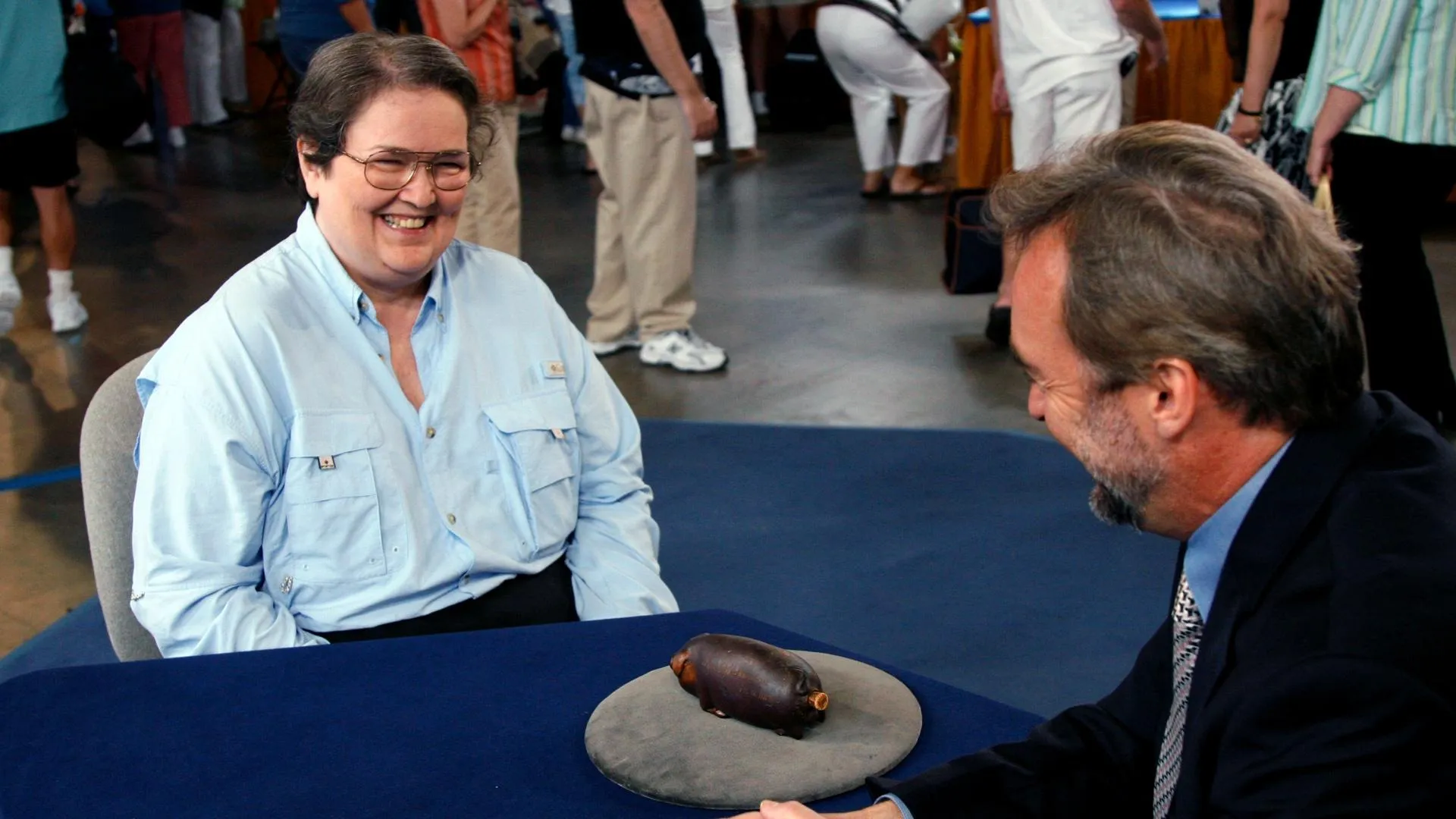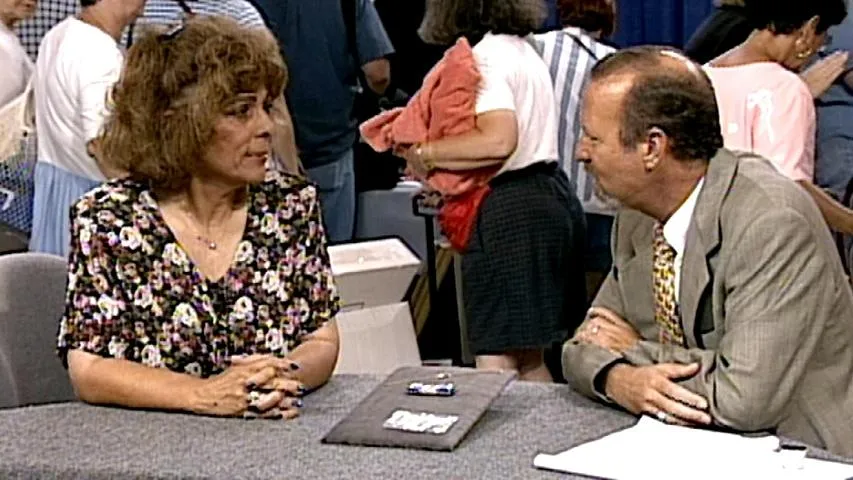GUEST: My grandparents were in Alaska during the gold rush. They went up there in 1898 and lived there for several years. My grandfather was a district attorney of Nome, and they collected some of these art objects, and this is one.
APPRAISER: Do you know what this object is?
GUEST: Well, a boot jack is what I thought it was.
APPRAISER: A boot jack.
GUEST: Uh-huh.
APPRAISER: Well, what you actually have here is not a boot jack.
GUEST: Okay, what is it?
APPRAISER: It is a harpoon rest.
GUEST: Oh!
APPRAISER: It's a Yup'ik harpoon rest, and it was lashed-- and we can see in the holes down here-- with hide. It would have been lashed to a large kayak. And the harpoon would have rested in there. And here we see at the top of this these images, which are most likely seals. And if we look very closely, the eyes and the nostrils are inlaid with a material called baleen. Baleen comes from inside the mouth of a whale. The Yup'ik people-- the Eskimo, as they used to be known-- embellished many of their objects with animals and animal spirits to help them in the hunt.
GUEST: Right.
APPRAISER: Believed they became one...
GUEST: ...with the animal.
APPRAISER: ...with the animal. So this would have been used as a good talisman to help them in their hunt as they were out in the ocean. These are not very common outside of museums anymore. I've had a couple in 20 years. This one is quite endearing. What we look for in these is these wonderful images of the seals, very humorous. I would estimate its value to be in a gallery about $8,000.
GUEST: Well, that's very nice. I just assumed it was a boot jack because of the shape and everything. Grandma never ever said anything about it.
APPRAISER: Well, I would very much hope that nobody uses it as a boot jack anymore.









